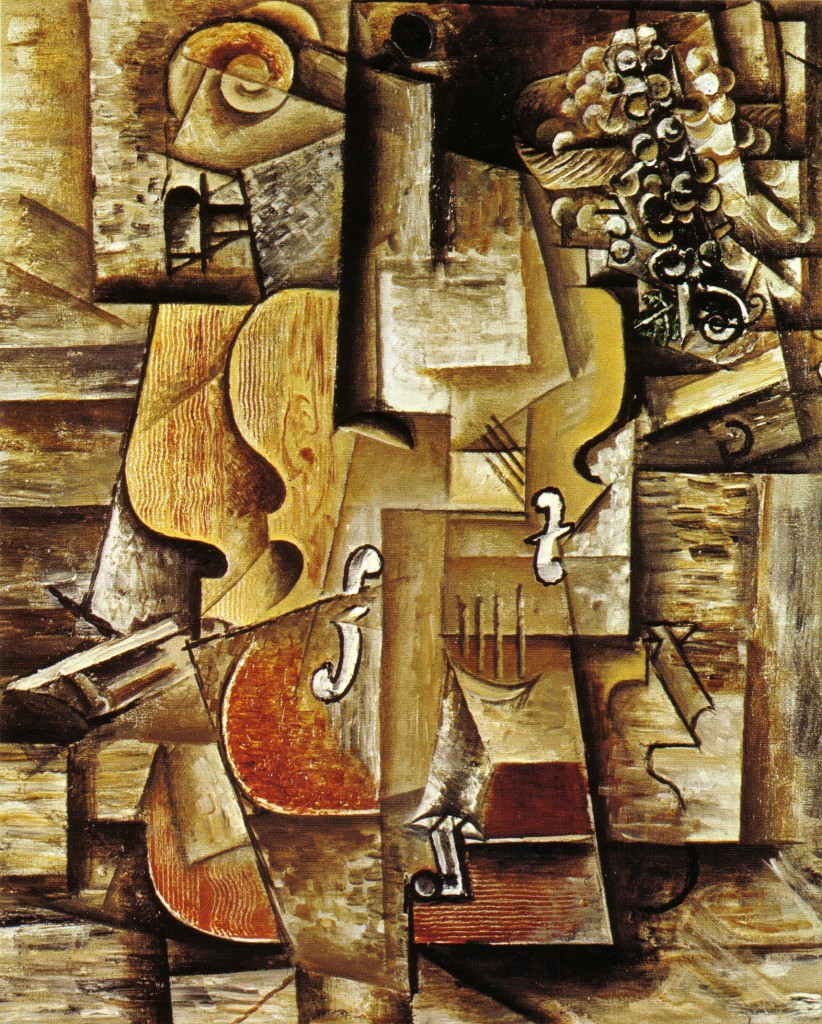
“In some respects [Cubism] represents a return to what we have called the Egyptian principles, in which an object was drawn from the angle from which its characteristic form came out most clearly. The scroll and one peg are seen from the side as we imagine them when we think of a violin. The sound-holes, on the other hand, are seen as from the front—they would not be visible from the side… Despite this apparent jumble of disconnected forms… the picture does not look really messy. The reason is that the artist has considered his picture out of more or less uniform parts so that the whole presents an appearance of consistency comparable to such works of primitive art as the American totem pole…
“Critics considered it an insult to their intelligence to believe that a violin ‘looks like that.’ But there never was any question of an insult. If anything, the artist paid them a compliment. He assumed they knew what a violin was like, and they they do not come to his picture to receive this elementary information. He invited them to share with him in this sophisticated game of building up the idea of a tangible solid object out of the few flat fragments on his canvas. We know that artists of all periods have tried to put forth their solution of the essential paradox of painting, which is that it represents depth on a surface. Cubism was an attempt not to gloss over this paradox but rather to exploit it for new effects.”
Ernst H. Gombrich, “Chapter 27: Experimental Art,” The Story of Art, 15th edition
